Wetpixel DEMA reports 2013
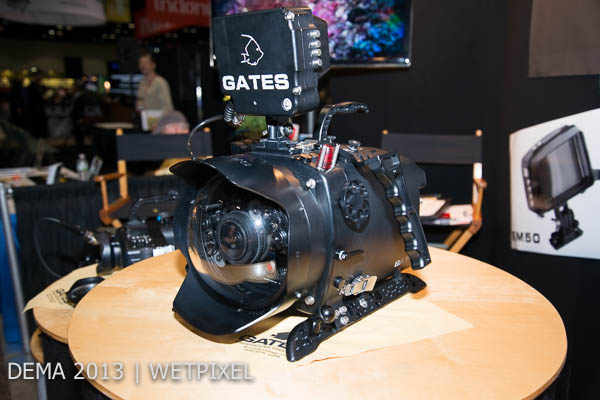
Gates Underwater Products
We kicked off our day meeting with John Ellerbrock who showed us through the company’s range of video housings. We started looking at their new housing for the Canon XA25, XA20, HGF30 camcorders.

John pointed out that these cameras have numerous performance advantage over SLRs, not least of which is a form factor that is easier to use and hold steady. Gates has spent some time getting the buoyancy and trim correct on the new housing.

Gates’s housing features a video out which can be used to output a video signal to the surface and an input for an audio line in, from a presenter for example.
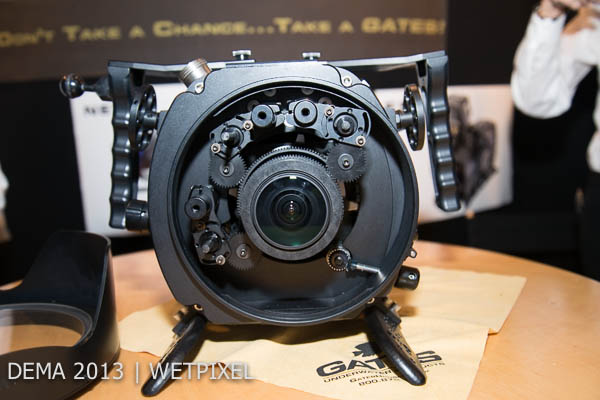
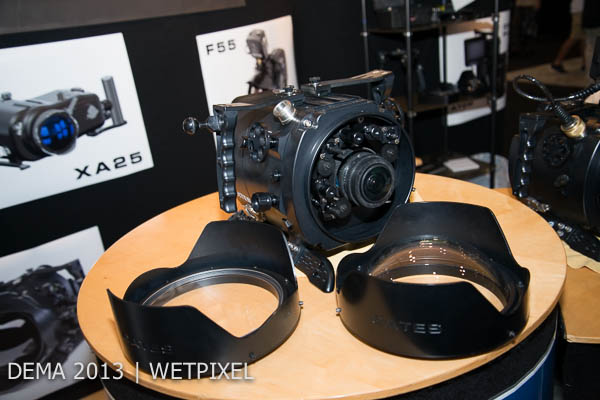
On the pro user front there is a new housing for the Sony F55. This offers the option of integrating Sony’s AXS-R5 recorder into the housing if required.
Although not new, the company had their housing for Canon C300 on their stand too.
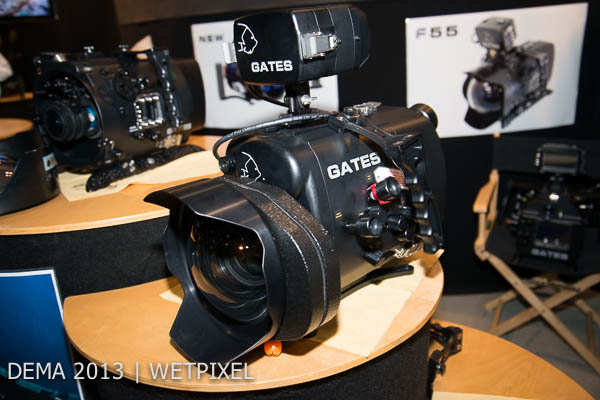
John mentioned that Gates plan to support the PMW 200 camera. He observed that this is the logical successor to the EX1R although as a single chip camera, it may not cope with low light levels as well as its predecessor.
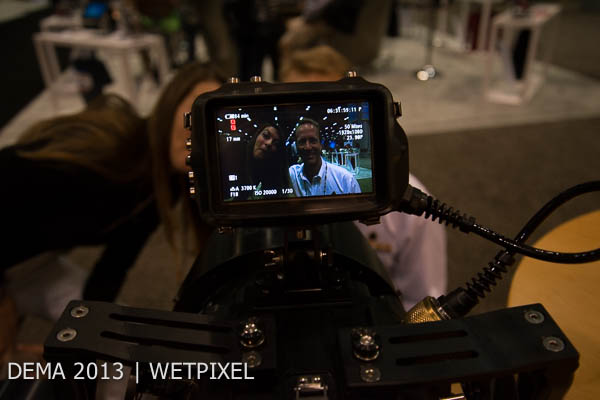
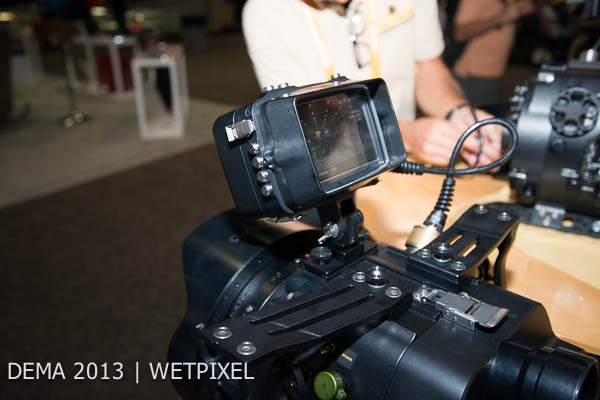
Gates introduced a new monitor earlier this year. The EM50 is an HD display which features focus peaking to help with the incredibly difficult task of getting HD footage sharp.
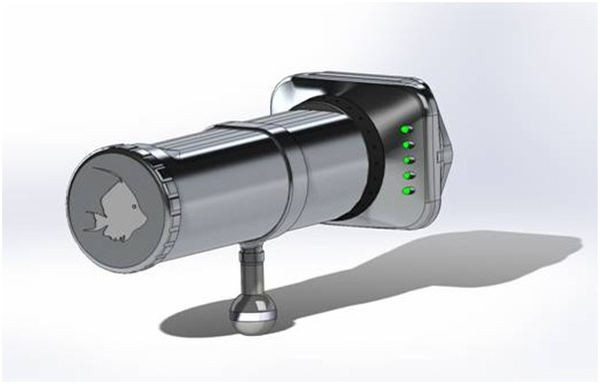
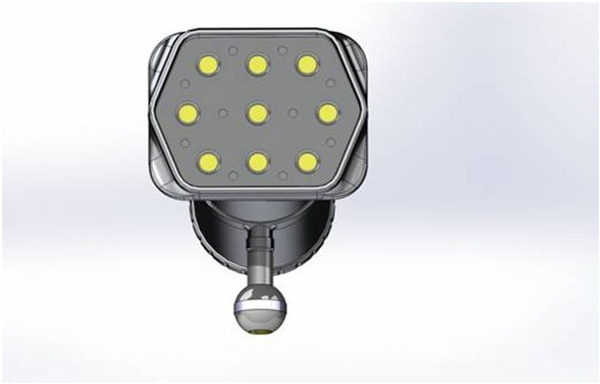
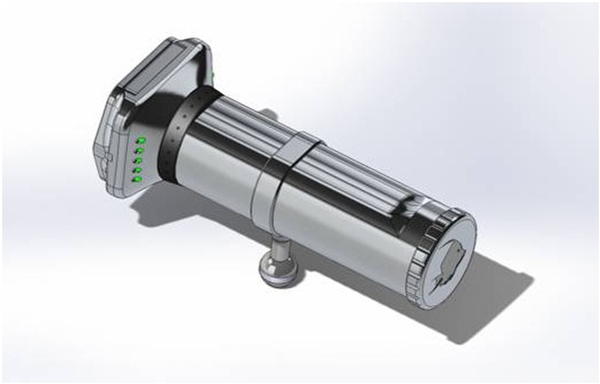
Gates are planning on releasing new lights next year. They will feature a minimum of 8,000 lumen and 1 hour burn time. Their output will be adjustable over 7 increments and they will have status and power indicator positioned so that the camera operator can easily view them. They are a small form factor and so will be a little negatively buoyant, but thus can be offset by using foam buoyancy collars. They will retail at around $2,000.
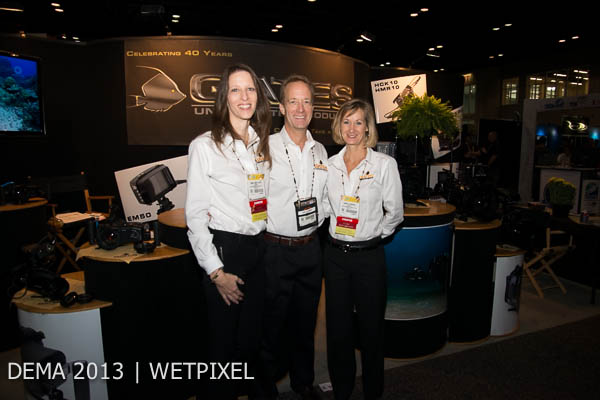
Reefnet
We then visited with Keri Wilk on his Reefnet stand.
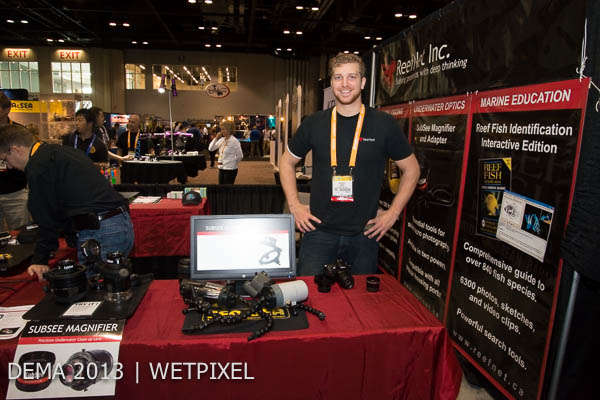
Although they had no new offering, Keri explained that this was due to the continuing popularity of their Subsea diopter products. These have been so popular that the company is presently trying to clear a significant backlog, which Keri expects to complete in the next 3-4 weeks.
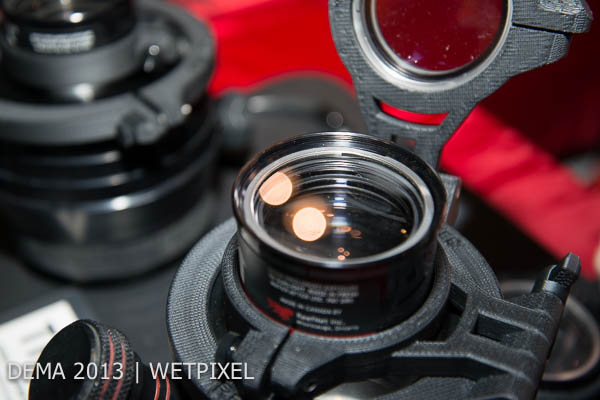
One small modification is the addition of a 67mm thread to the front of the Subsea. This does allow stacking, although doing so with the +10 will move the focus point inside the front Subsea as so will not give much benefit. The thread will allow the attachment of other third-party filters and so forth however.
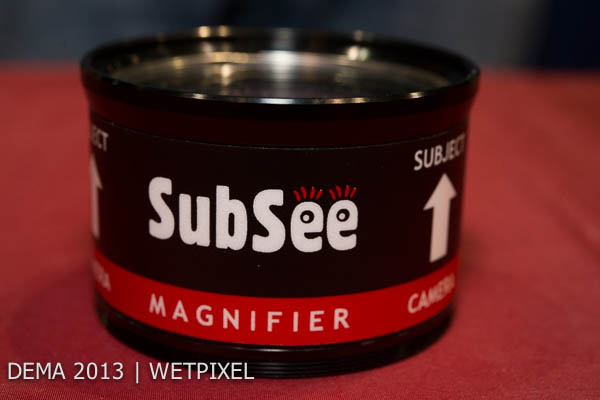
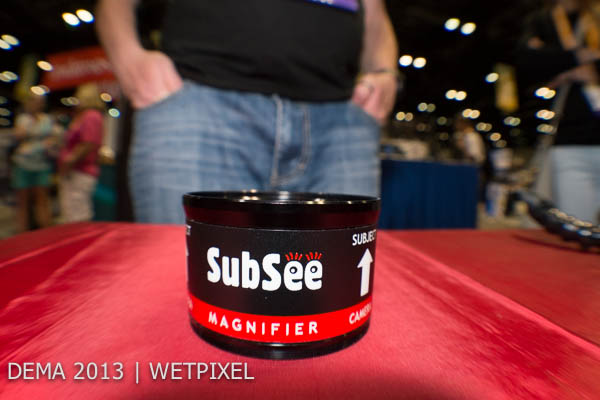
One new development he has been playing with is a wet wide-angle convertor that allows the conversion of macro lenses into wide-angle. This will be really useful for wide-angle macro for example. Keri showed us some early prototypes, which seem to give a field of view of around 90° to 150°.
Nauticam
Nauticam has a large booth and we met with Chris Parsons to check out their new products. Chris demonstrated their new Vacuum leak detection system for us:
Another new product is their Super Macro Converter (SMC).
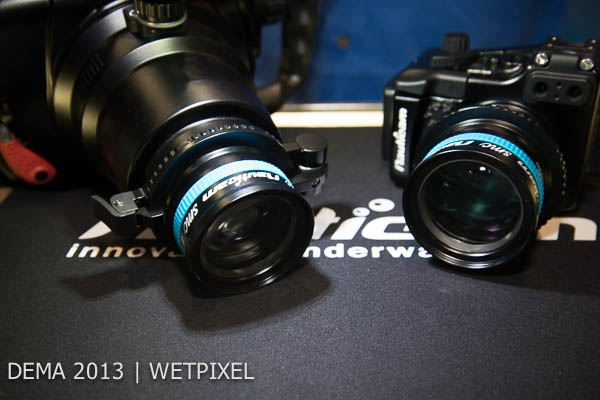
This is a wet conversion lens that can be attached to any port.
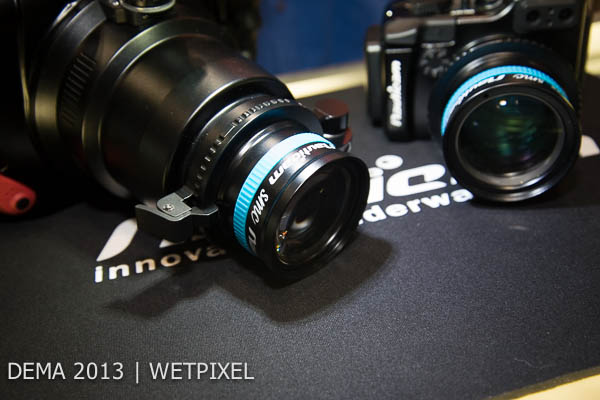
It features a slightly protruding thread so must be used either with a Flip holder, or with the 67mm to 67mm adaptor ring that is supplied with it.
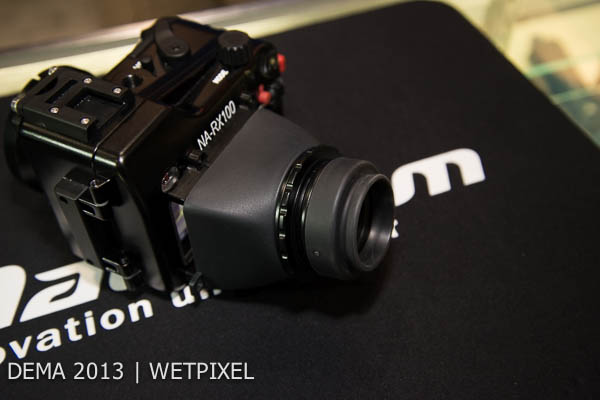
Chris showed us their LCD magnifier that can be used with the company’s compact housings. This attaches via rails that are attached to the housing and are specific to each. He noted that customers will need to specify which mounting kit they require when ordering.
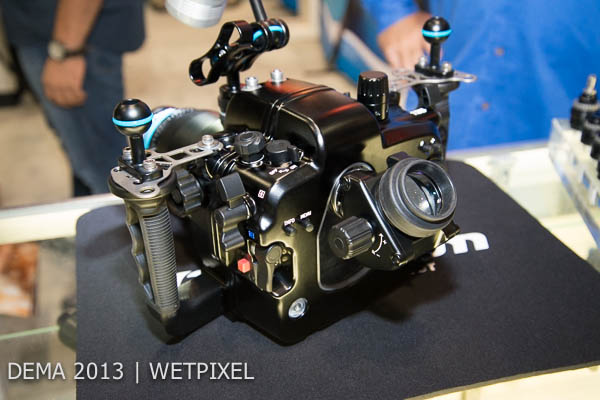
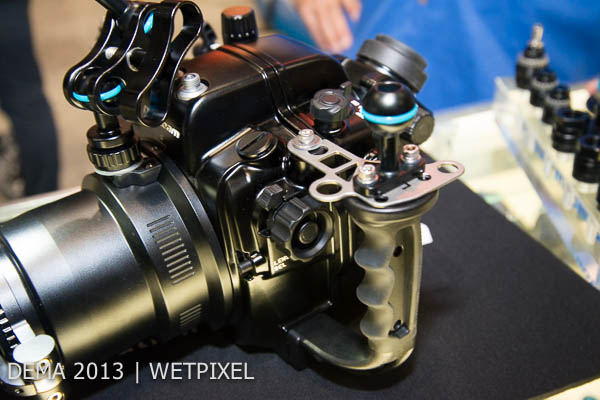
The company released their NA-70D housing for the Canon EOS 70D, and it was on the stand. Chris pointed out that hey have made attempts to reduce weight by removing excess metal from areas where it is not required. This means that it is around 250g lighter.
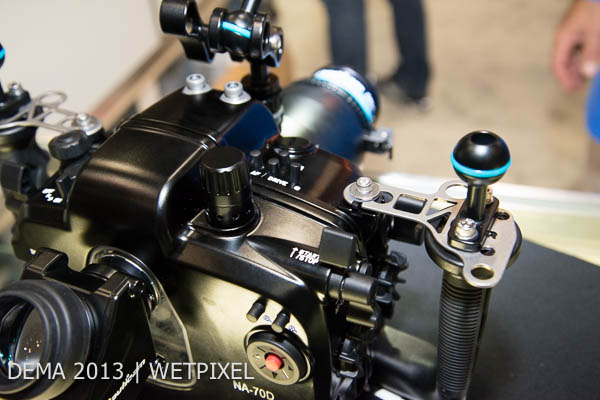
It also has 3 bulkhead ports, one of which is located on the top os the rear door, and is designated for the vacuum valve. Nauticam’s Vacuum system is supplied as standard with the housing.
Chris then showed us a series of new housings for various compact cameras.
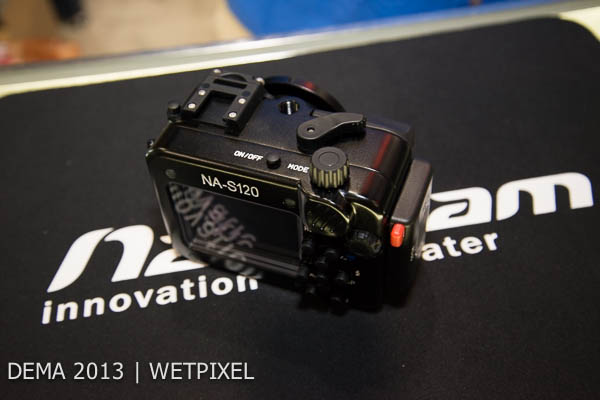
These included the NA-S120 for the Canon PowerShot S120.
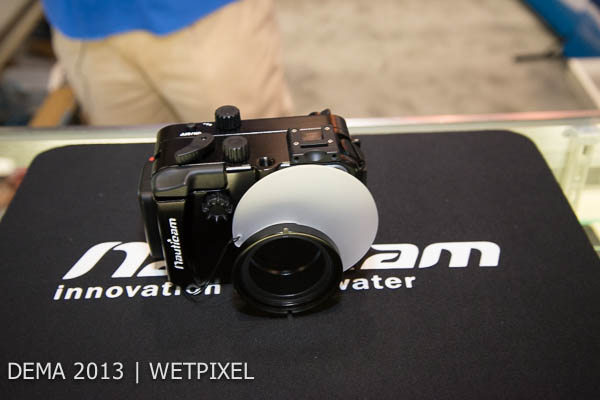
The NA-G16 for the Canon PowerShot G16.
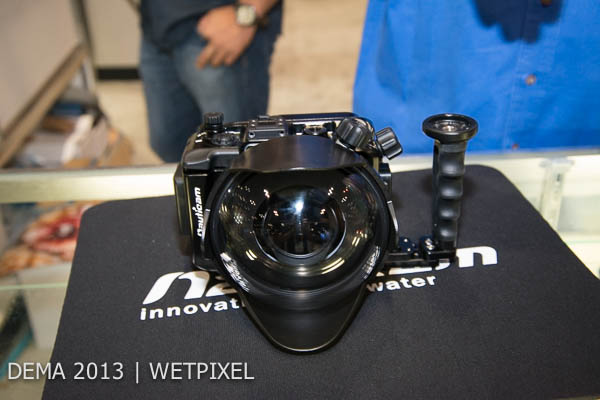
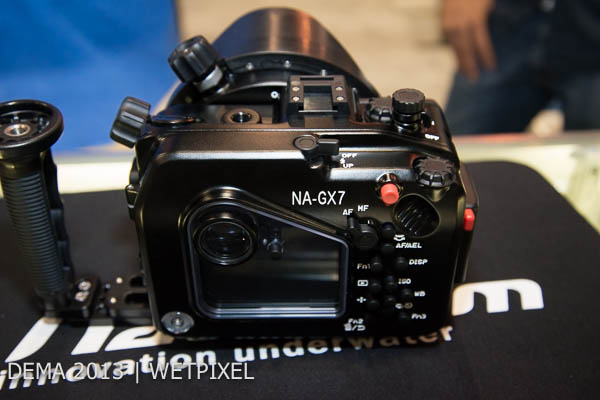
The NA-GX7 for the Panasonic Lumix DMC-GX7. Peter Rowlands is actually diving the housing pictured in these pictures at Chrystal River today and we hope to feature his preview of its performance very soon.
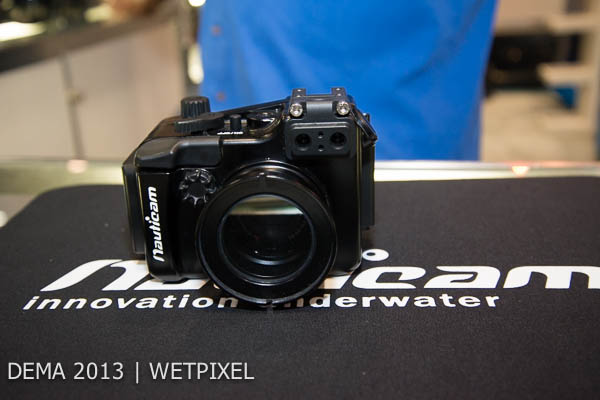
The NA-RX100II for the Sony RX-100 II.
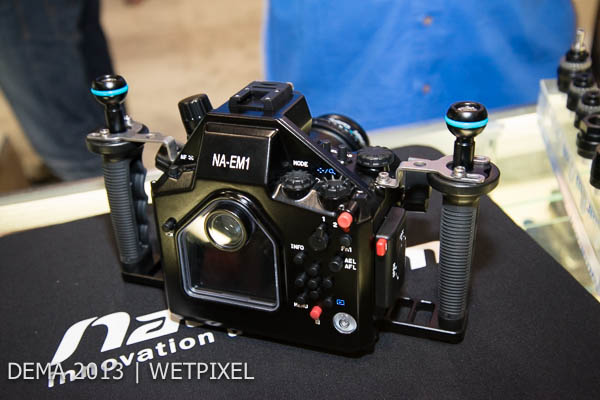
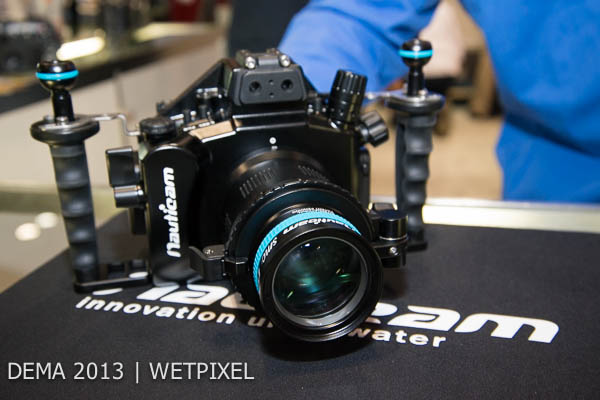

He also showed us an early prototype for the Olympus OMD-EM1 micro 4/3s camera.
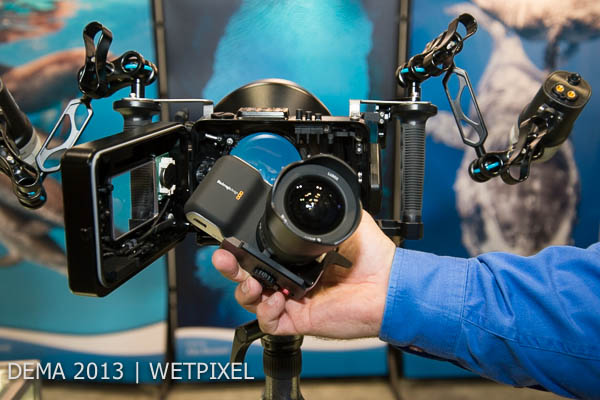
Moving back on to bigger housings, he showed us a new one for the Black Magic Designs Pocket Cinema Camera. Entitled the BNA-BMPCC, the camera will accept micro 4/3s, although it has a big crop factor.
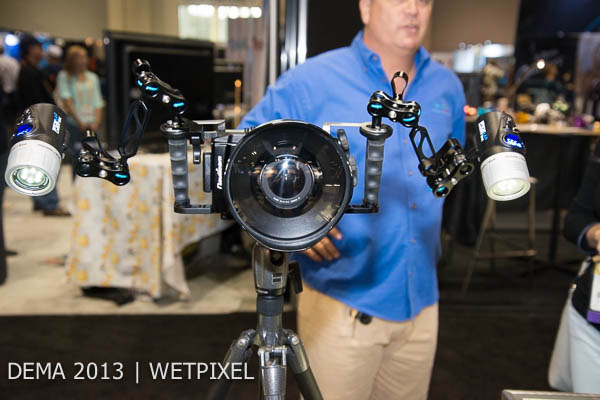
Chris also mentioned that it is very power hungry and the batteries may not last a dive.
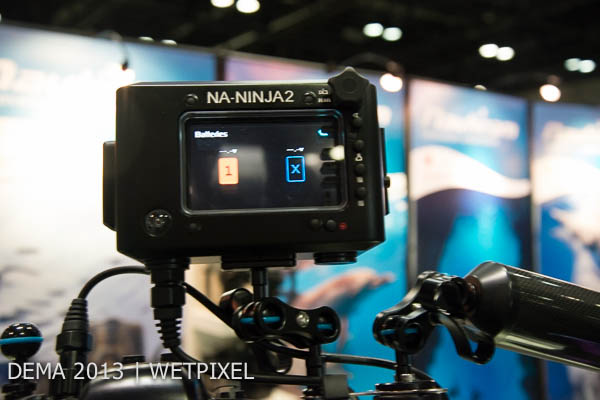
In terms of monitoring and storing video output, Nauticam has a housing for the Atomos Ninja 2.

Jumping back to Black Magic designs, Nauticam also has a new housing for the Cinema Camera.
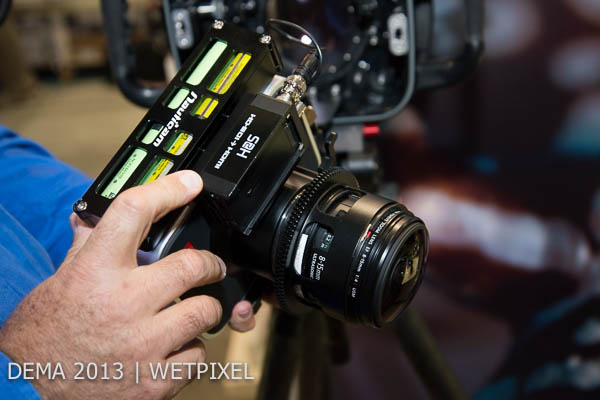
The NA-BMCC will accept the 4K version of the camera when it ships, and the housing is equipped with an external battery pack and in the case of the one at the show, and HDMI convertor to allow for monitoring.
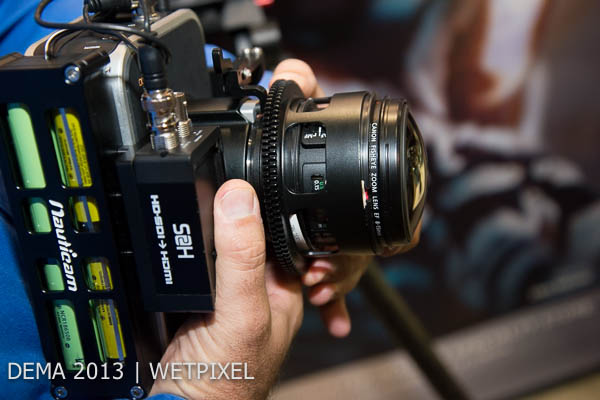
Nauticam has also come up with a dual zoom ring to control zoom and focus as appropriate.
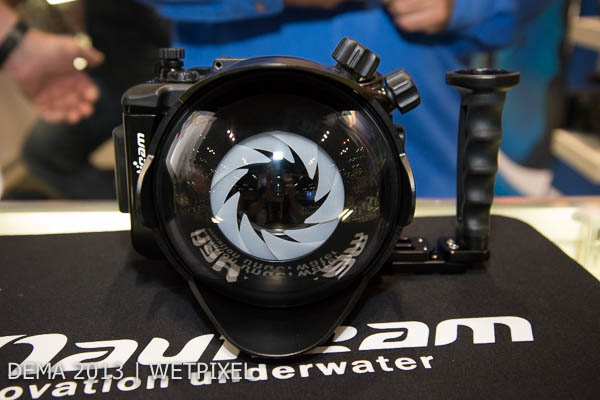
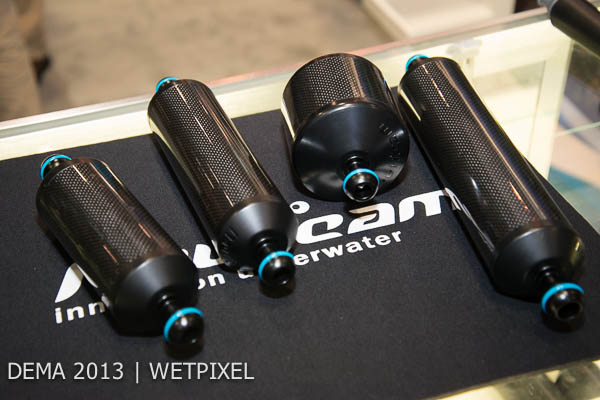
In terms of housing accessories, the company has a smaller (170mm/6”) version of their white balance dome port as well as a family of carbon fiber buoyancy arms.
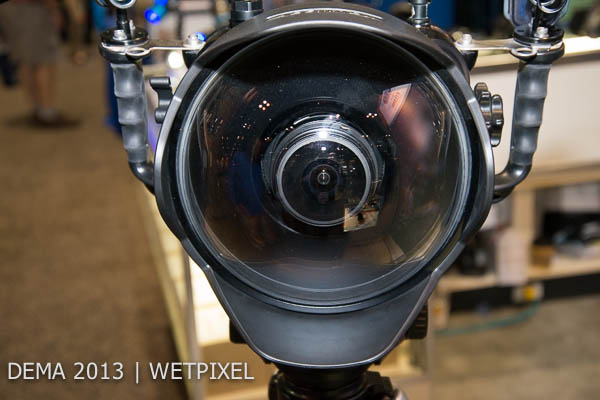
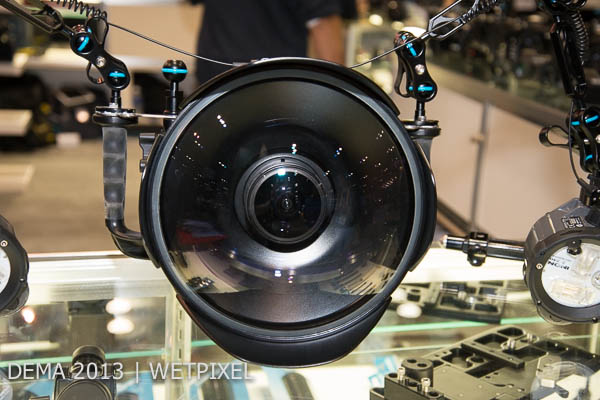
Lastly, they were exhibiting new 230mm (9”) and 250mm (10”) glass dome ports.
Acquapazza

Our next stop was with Hideto Yamamoto and his translator Miki Bultman from Acquapazza.
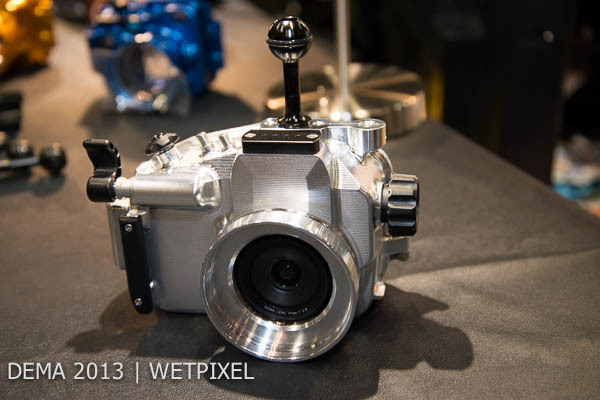
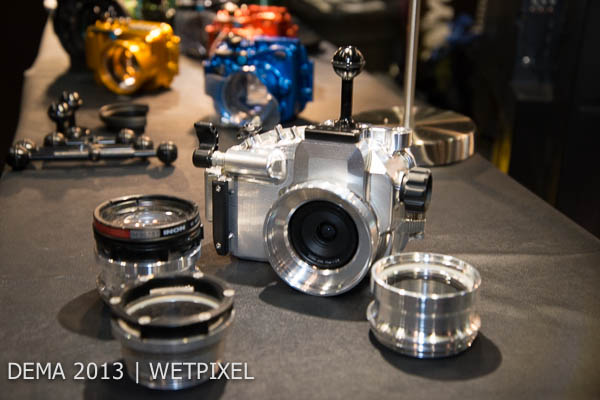
The company offers housings for the Sigma DP series cameras with their Foveon sensors. These have fixed lenses, with the DP1 having a 19mm f2.8, the DP2 a 30mm f2.8 and the DP3 a 50mm f2.8. Hence the company offers specific lens ports to cope with these options, including a fitting to use Inon’s 115 dome port for the DP1.
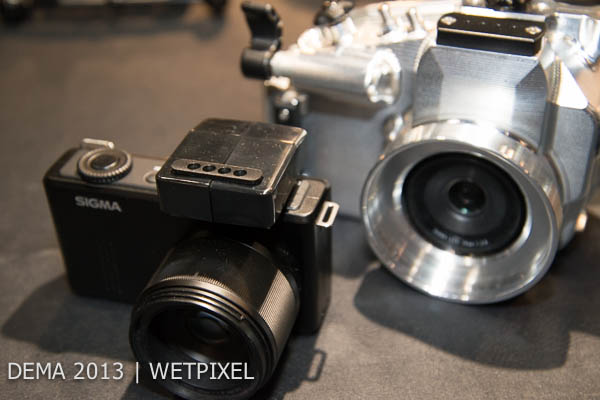
In addition Acquapazza offers a electronic to fiber optic convertor for the camera. This allows for triggering of strobes by the camera and is limited to manual power setting only.
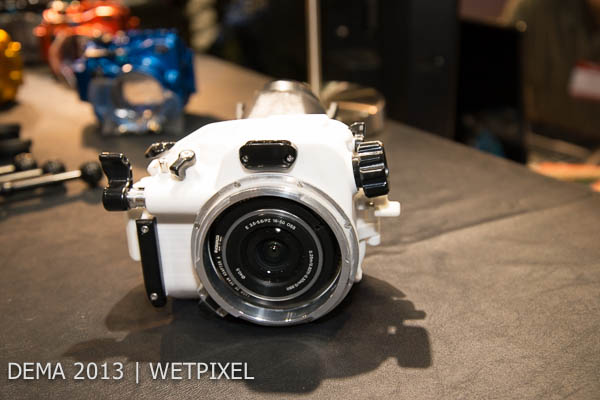
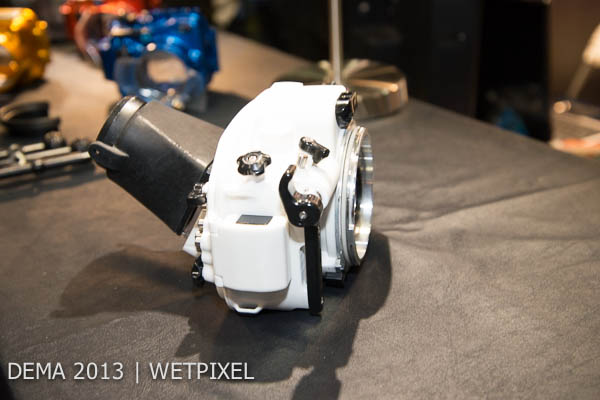
Hideto and Miki showed us a prototype housing for the Sony NEX 5T, and they expect to be shipping this from early 2014.
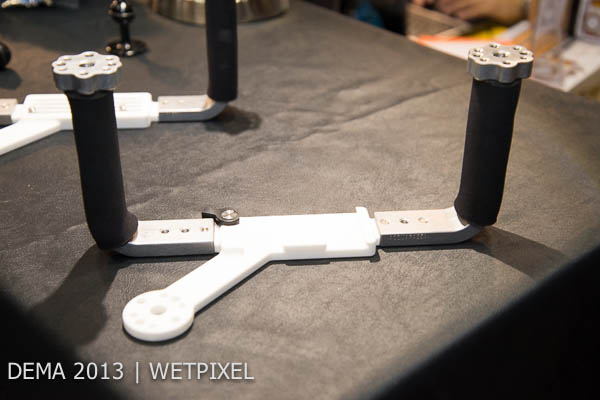
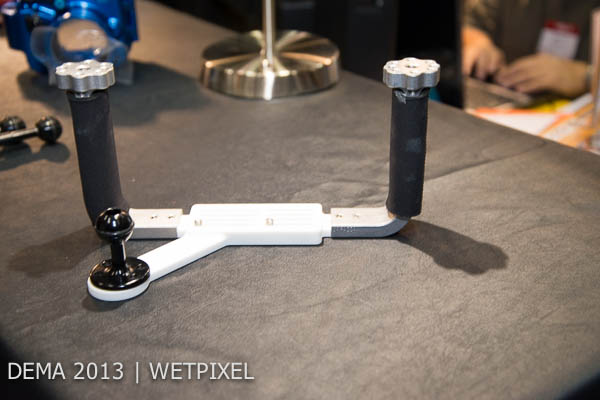
Another future product is a tray and handle system, which can either be conventionally attached to the housing or use a quick-release saddle option.
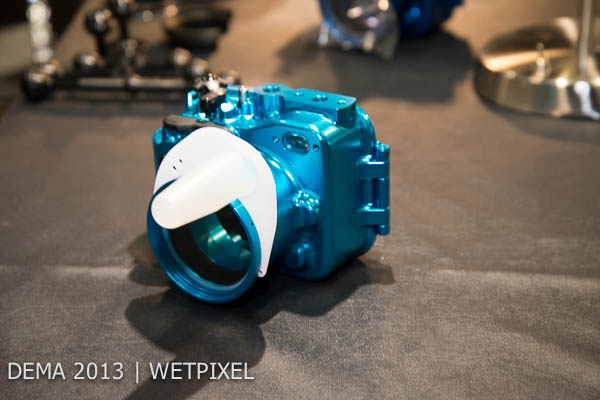
They also have housings for the Sony RX100 II, which feature an optional elongated “proboscis” diffuser that allows the camera’s flash to illuminate beyond a lens port.
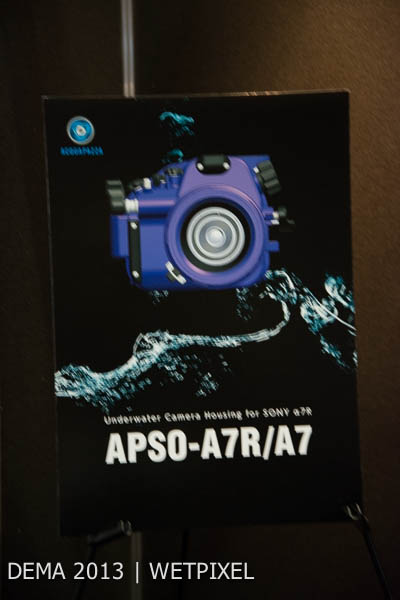
Although not on display at the show, the company is planning to support the new Sony NEX 7R, with shipping expected from January or February next year. Acquapazza offers port combinations for all Sony NEX and a mount lens options.
MOLI
Andi Voelz was on his stand with a new range of lights called MOLI.
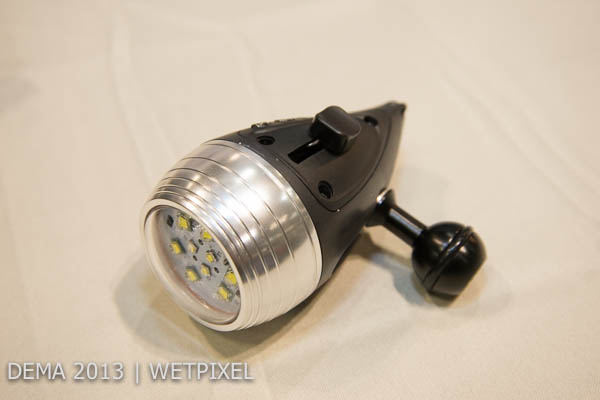
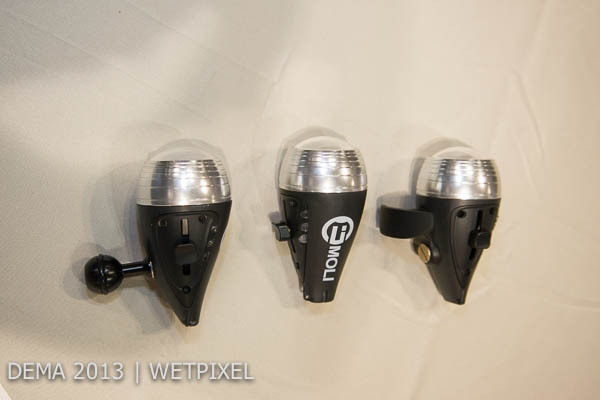
These are a multifunction light with a dome lens. They are externally charged and will be available in three intensities, namely 900, 1400 and 2500 lumen. The former two have burn times of 60 minutes at full power and the latter, 5o minutes. Each torch can be cycled through red, spot and flood light output via a switch, has three light levels and they have LED indicators for both intensity and battery remaining located on the sides, so that these can be viewed when the torch is attached to strobe arms.
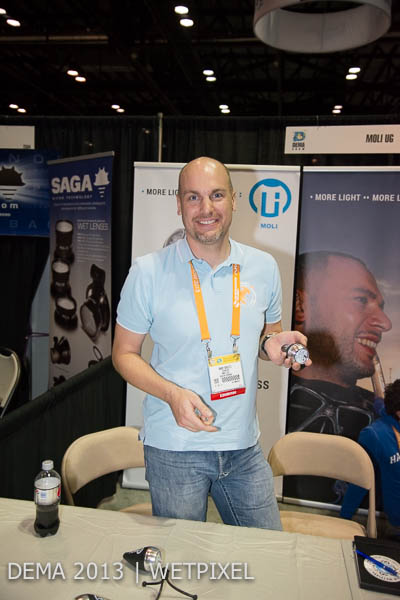
MOLI will offer a variety of mounting options, including a 1” ball mount.

iTorch
Sticking with lighting for the moment, I visited Doug Taleska of iTorch on his booth. They have produced a series of new video/imaging lights.
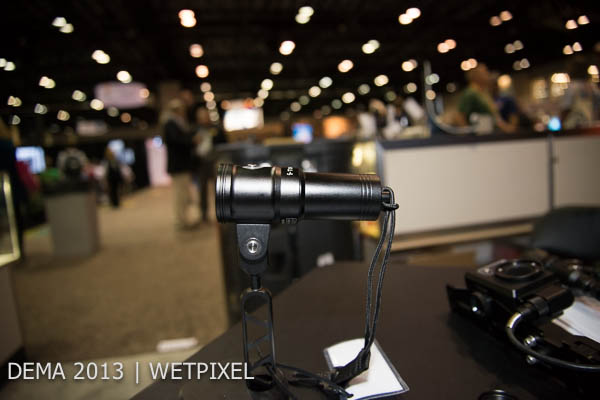
The Pro 6 features a push button adjustment, with a colored ring that indicates battery status. The torch outputs 2400 lumen and has a smooth, clean beam with an angle of 120°. It has white, red and UV (blue) light modes and runs for one hour from a battery (at full power). Each torch is shipped with two batteries.
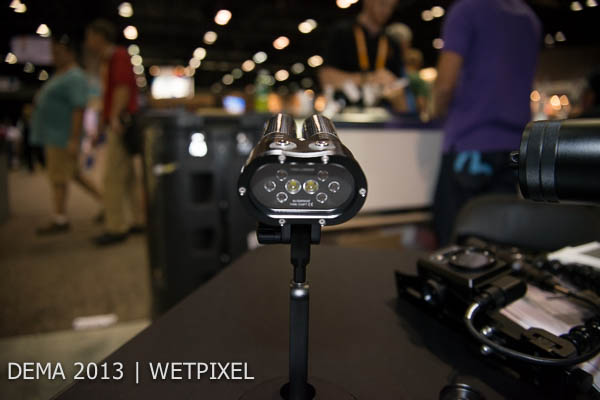
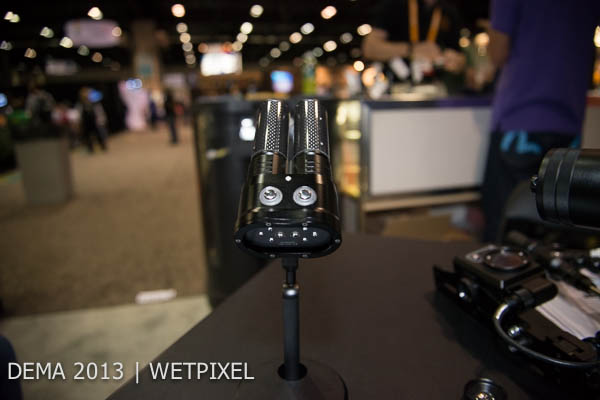
The Gen 1.3 has two push button adjustment. The torch outputs 1500 lumen via 3 white power levels and 2 UV (blue) levels. Again, it has a run time of one hour at full power.

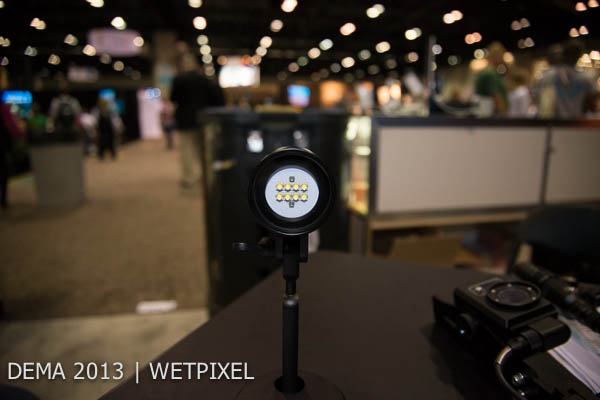
The Pro 7 also features a push button adjustment, with the colored ring that indicates battery status. The torch outputs 5,000 lumen and has a beam with an angle of 120°. It has 5 white power levels and two red modes and runs for one hour from a battery (at full power). Each torch is shipped with two batteries.
All the lights are now shipping with a redesigned YS mount, with a large moulded butterfly nut to make tightening and removing easier.
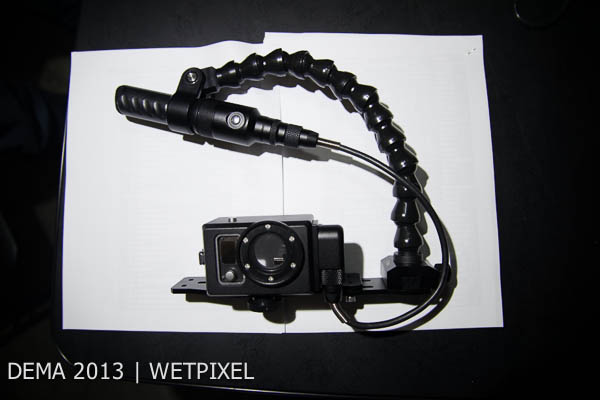
Another interesting product is iTorch’s aluminum housing for the GoPro HERO3 and HERO3+. This can accommodate the LCD BacPac and is depth rated to 150m (450ft).
It also has the option of an external power pack that allows the camera to run for 2.25 hours with the BacPac on or 4 hours without
iTorch supply a polycarbonate housing for the iPhone and this has now expanded to include the Galaxy S3 and S4 smartphones. They also have produced a red filter that can be attached to their wide-angle conversion lens.
Keldan
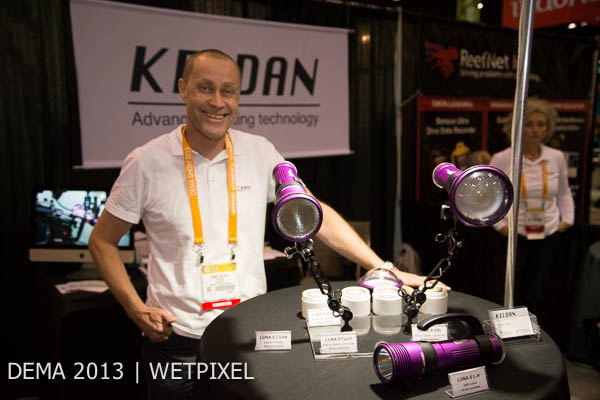
Keldan’s professional video lights have remained cosmetically the same, but will benefit from updated batteries during 2014. These will allow power increases in both Luna 8 and Luna 4 models. The new batteries are 3.4 and 6.8 mAh respectively.
Daniel Keller also showed me the new blue light module for use with fluorescence photography in the Luna 8. Although the blue color is not true UV, it has a stronger output than the UV module that Keldan also supply. The Luna 4 will also be available in both UV and blue versions too.
As always, Daniel is fascinating to talk to about light and how to crete great lighting for shooting video.
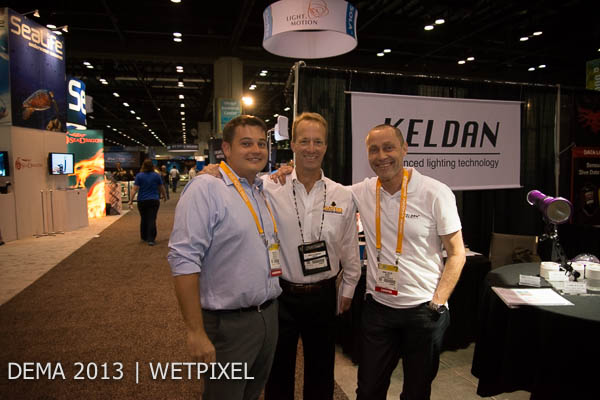
Fisheye
Still sticking with lighting, we visited Kenji Ohmura and Kaz Okada on their booth.

They share their stand with Reef Photo, Zen and Nauticam.
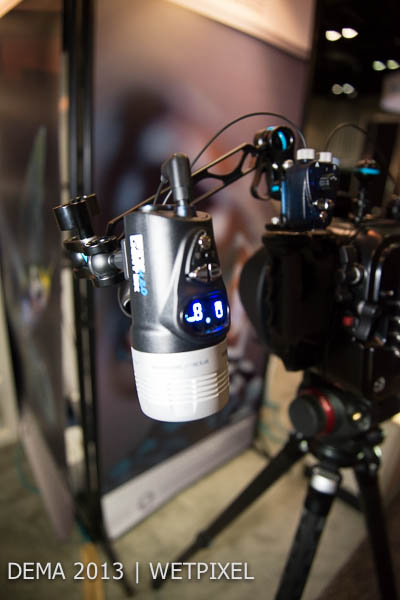
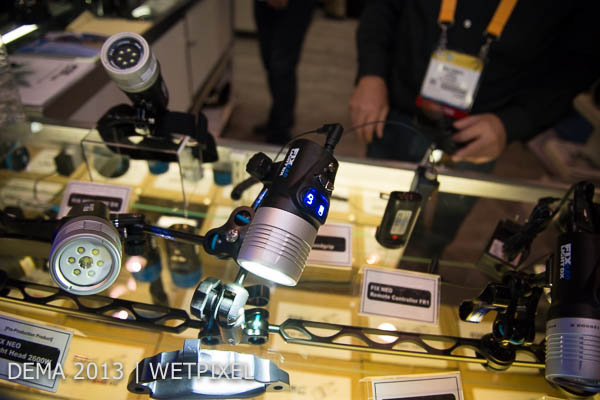
Fisheye offers the Neo video light system that has torches with 2000, 1200 and 800 lumen outputs. These are controlled via push buttons on the torches and also have a digital read out having a variety of information including output levels and remaining battery power.
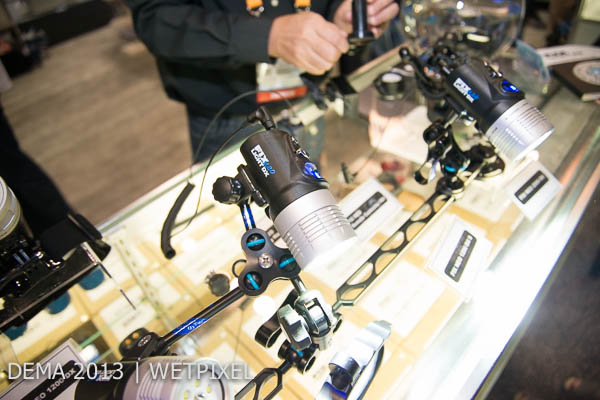
Interestingly, each torch can be fitted with different power heads, and even if there were to be changes in future, the torch can have its firmware updated by Fisheye or a local distributor. Lastly, they have thermal overload protection, so will shut down if they become too hot.
The torches have removable Li-ion batteries, which can also be charged externally via a supplied adaptor. In addition, each torch is supplied with a wide variety of mounting options, including a 1” ball, Loc-Line adaptor, YS mount, GoPro mount and a handle option.
The 1200 and 800 torches have burn times of 100 minutes and the 2000, 60 minutes all at full power.
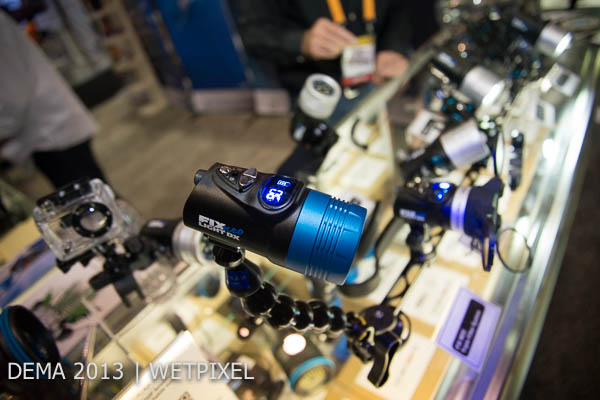
Fisheye will be offering a blue version for fluorescence photography and a multi color version that allows for red, blue or white outputs with the option of the user varying these. This will be available from February next year.
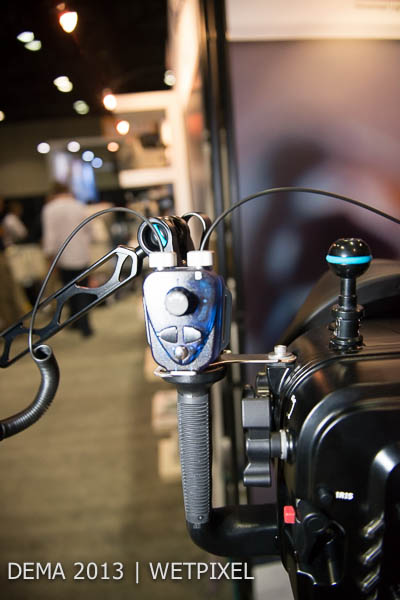
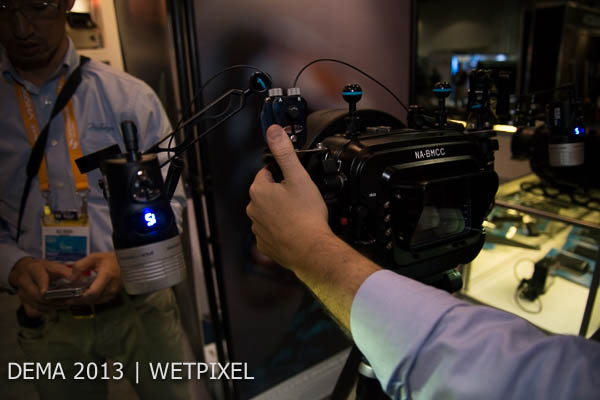
Fisheye also offers accessories for their lighting system, including a multi controller that uses fiber optic to vary the light output of up to 4 lights from central location.
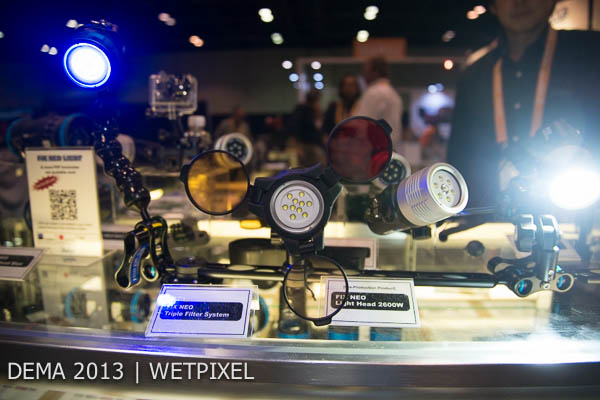
In addition, they have a new triple filter that gives 5500°K, 4000°K and red filters, all mounted on one bracket.
Zen
Whilst on the Reef stand, Abi and I looked at Zen’s new DP-170 dome port. This glass 6” (170mm) port is ideal for fisheye lenses on full frame cameras.
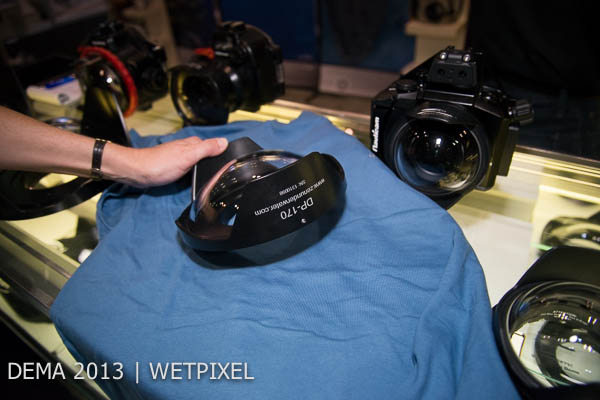
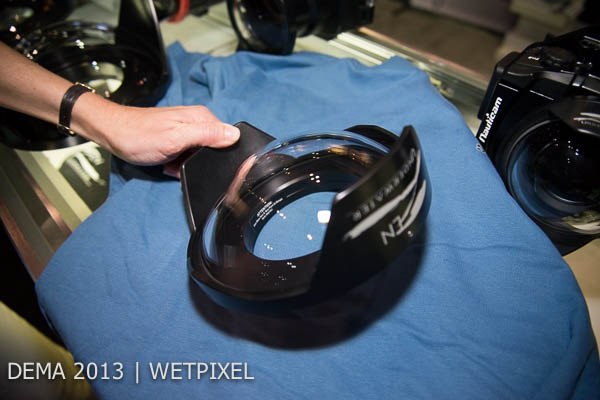
Although not on the stand, Ryan Canon also mentioned that the removable shade system on the Zen 4” (100mm) port for the Canon 8-15 mm fisheye has been redesigned.

Backscatter
We returned briefly to the Backscatter stand to meet with Andrew Bausk of Olympus, who had the first Olympus PT-EP11 housing for the OMD-EM-1 camera.

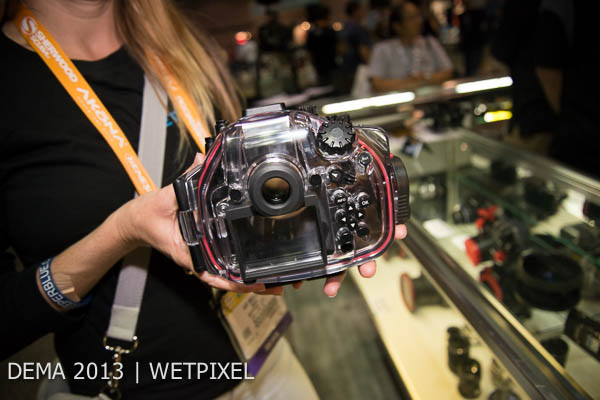
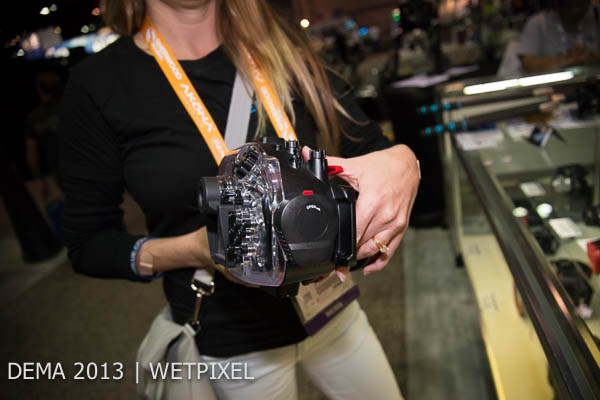
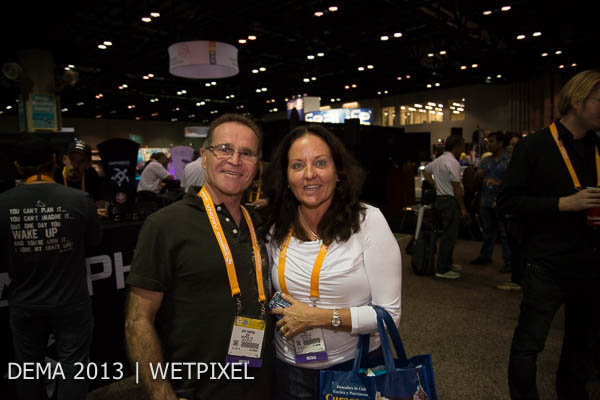
Page 1: Introduction and booth visits with Aquatica, Backscatter, GoPro, Subal and Aditec Page 2: Booth visits with Seacam, Ikelite, Watershot and Ultralite Control Systems Page 3. Wetpixel/DivePhotoGuide DEMA imaging party Page 4. Booth visits with Gates, Reefnet, Nauticam, Acquapazza, MOLI, iTorch, Keldan, Fisheye, Zen, Olympus Page 5. Booth visits with XIT404, Light and Motion, BS Kinetics, DivePhotoPro, Hugyfot, Sea & Sea, Inon